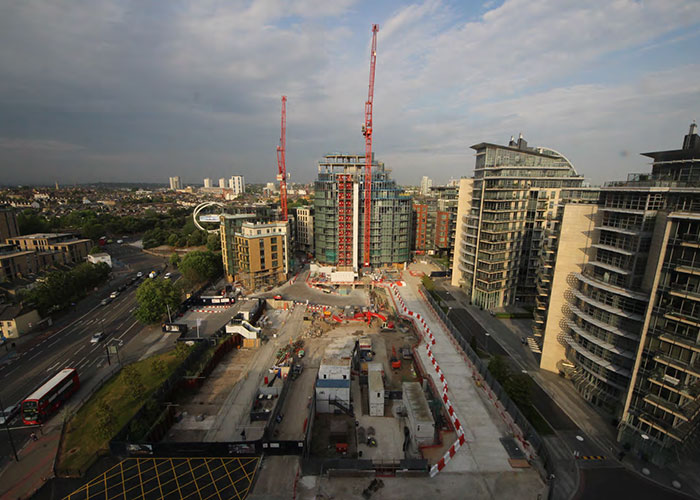
Protecting your construction site over the Christmas Period
As the year winds down to a close, and workforces across the UK are looking forward to a well-deserved break, for construction managers, some of the most significant risk factors also begin to arise.
Construction sites remain one of the most commonly targeted premises for theft and vandalism – and, over the festive holidays, an unstaffed site presents an appealing prospect for opportunists looking for valuable materials, tools, assets and equipment.
Here are the top tips from the ProBlock team to keep your construction site safe, protected, and intruder-free so you can enjoy the holidays.
Identifying Key Closure Risks for Construction Sites
The first step is to carry out a thorough risk assessment to determine your easiest points of entry, what locations are – and are not – covered by CCTV and alarm systems, and what sort of security breaches you might encounter.
These might include:
- Trespassers including vandals and squatters.
- Organised burglaries and vehicle thefts.
- Other risks such as fire, flooding or gas leaks.
Over 2020, as many businesses have experienced long periods of closure and lockdowns, the industry has seen an explosion in insurance claims, with vehicles and tools left unattended for sometimes weeks at a time.
The Chartered Institute of Building (CIOB) reported that 21% of surveyed construction sites suffer thefts every week and that 92% of sites experience some form of robbery either weekly, monthly or annually.
Construction Enquirer reported this year that security breaches had increased by around 50% during the lockdown.
This unique scenario presents a challenging situation for construction site managers. Many have had a year where far more losses have been experienced due to theft, and when it is more crucial than ever to leave a site secure and defended from intruders throughout the Christmas holidays.
Remember that risks are not only thefts and burglaries; but also general trespassing, squatters, malicious damage and vandalism. These security threats can be just as costly, time-consuming and stressful to deal with as the loss of assets, and so the time for vigilance is now.
Mitigating Security Threats for Premises Managers
The first recommendations we’d make are practical ones; and things that you would identify in a risk assessment process to mitigate your risk factors. It is vital to avoid leaving any assets or materials in a vulnerable position where they are more likely to attract criminal attention.
- Arrange keyholding before the Christmas break – and do not leave any keys on-site, unless in a secure, locked safe. If any alarm activations occur, you need to know who will respond, how far away they are, and whether they are happy to be responsible for dealing with a call-out when the site is closed.
- Ensure vehicles are parked in a safe space, ideally inside or in a vehicle bay. Never leave any vehicles unlocked, even if they are parked inside a locked construction site, and make sure they are emptied of tools, equipment and valuables before the workforce leaves.
- Keep vehicle keys with the authorised keyholders, or the driver, and do not leave these in the property, and not on clear view through a window – including in a key cabinet that could be prised open.
- Lock all doors and windows; turn off all heating appliances to avoid fire risks.
- Ensure every outbuilding, storage shed, locker space and gate is also left secured; if you have any older padlocks or unreliable locks, get these fixed before the festive period so you can offer an added layer of protection.
- Arrange, where possible, for your security provider or a senior member of staff to visit and inspect the site between the holiday closure to make sure everything remains secure and safe.
Your lockdown process should include a full site perimeter check; ideally before the final working days to identify any new risks that have arisen, such as damage to fencing that might present a new hazard.
Practical Security Measures to Protect Unstaffed Construction Sites
Now we’ve covered all of the essentials, it’s time to consider your security arrangements, and what you can do to add a layer of defence to make your construction site an unattractive prospect for potential criminals:
- Use commercial strength lighting to illuminate entranceways. Security lighting deters criminals, avoids trespassers, and can help to capture CCTV surveillance.
- Postpone any valuable deliveries until the New Year, to avoid leaving any necessary materials on-site during the closure period.
- Fit tracking devices, or UV security tags to all assets, plant and machinery, with labelling to indicate that these items have been tagged and will be difficult to resell.
- Check your fencing is adequate – ideally, perimeter fences should be high, with locked gates, and anti-climb paint.
- Think about vehicle entry points and any pathways or roads that lead to your construction site and could be accessed by criminals. A simple hire solution such as concrete blocks can secure such roadways and make your construction site challenging to access.
- Use CCTV in primary areas, with mast-mounted CCTV towers to cover large areas of land. Install signage on gates and fences to indicate the presence of CCTV.
- Commission an alarm receiving centre to deal with all alarm activations; from CCTV surveillance, vacant property alarms, video verified alarms to smoke and gas sensors, having a professional on hand to deal with activations will take a weight off of your mind.
By taking a little time to document the most significant risks, and put in place even temporary measures to avoid them, you can keep your construction site safe throughout the holidays, ready to return in the New Year and resume work where you left off!
For more information about ProBlock’s construction site security services, visit us online, or get in touch for professional advice and recommendations.




